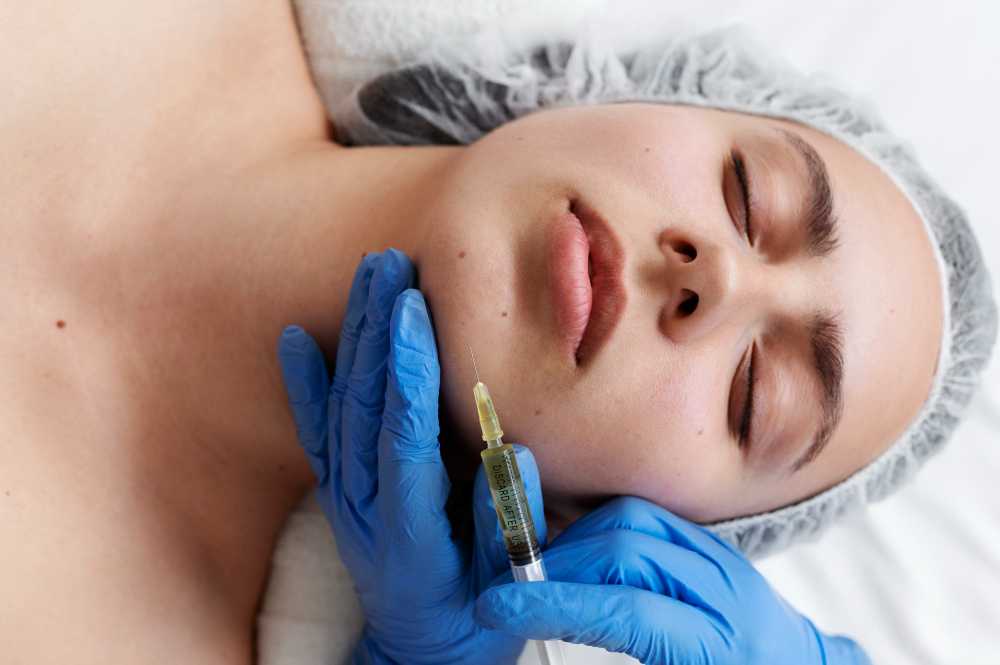Wrinkles and fine lines are natural signs of aging, but for many of us, they can be a source of frustration. If you're looking for a solution that offers smoother skin and a refreshed look, neurotoxin treatments might be your answer. These treatments, including popular options like Botox and Dysport, have become go-to choices for us wanting to reduce wrinkles without surgery.
Let’s dive into everything you need to know about neurotoxin treatments, including how they work, what to expect, and which options may be best for you.
What Is a Neurotoxin Treatment?
Neurotoxin treatments use injections to relax specific muscles, reducing the appearance of wrinkles and preventing new ones from forming. The key ingredient in these treatments is a purified form of botulinum toxin. When injected, it temporarily blocks nerve signals that cause muscle contractions.
These treatments target dynamic wrinkles, which are caused by repeated facial movements like frowning, smiling, or squinting. By relaxing the muscles responsible for these movements, the skin becomes smoother and wrinkles less noticeable.
What Is Botox Used For?
Botox is one of the most recognized names in neurotoxin treatments. It’s primarily used for cosmetic purposes, but it has several medical applications as well. Here’s a breakdown:
Cosmetic Uses
- Reducing crow’s feet around the eyes
- Smoothing forehead lines
- Diminishing frown lines (also known as “11s” between the eyebrows)
Medical Uses
- Treating chronic migraines
- Reducing excessive sweating (hyperhidrosis)
- Managing muscle stiffness or spasms
- Relieving TMJ symptoms
Whether you’re addressing wrinkles or other concerns, Botox offers a versatile solution.
Dysport vs. Botox: Which Is Better?
If you’ve been researching neurotoxin treatments, you’ve likely come across Dysport. While both Botox and Dysport work similarly, there are subtle differences that might influence your decision.
Molecular Structure
Dysport has smaller molecules than Botox, which can make it spread more easily. This might be better for larger areas like the forehead.Dosage
Dysport often requires a higher dosage to achieve the same effects as Botox. However, this doesn’t necessarily mean it’s less effective; it’s just formulated differently.Onset of Results
Dysport tends to show results a bit faster—often within 24 hours—while Botox might take 3-5 days to kick in.Duration
Both treatments typically last 3-4 months, but some of us report that Dysport lasts slightly longer.
Ultimately, the choice between Dysport and Botox depends on your needs, the area being treated, and your provider’s recommendation.
How Do Neurotoxin Injections Work?
Neurotoxin injections are quick and relatively painless. During the procedure, a trained professional uses a fine needle to inject the neurotoxin into specific muscles. The entire process usually takes 10–20 minutes, depending on the number of areas being treated.
Here’s what happens step by step:
Consultation
Your provider will discuss your goals and assess the areas to be treated.Preparation
The skin is cleansed, and in some cases, a topical numbing cream is applied.Injection
Using precise techniques, the neurotoxin is injected into the targeted muscles.Post-Treatment
There’s minimal downtime, but you may experience mild swelling or redness for a few hours. Full results are visible within a few days.
Is Botox a Neurotoxin?
Yes, Botox is a neurotoxin, but it’s a purified form designed for medical and cosmetic use. The term “neurotoxin” might sound intimidating, but when used correctly, it’s safe and effective. Botox is FDA-approved and has been extensively studied for both its safety and efficacy.
Side Effects of Neurotoxin Injections
While neurotoxin treatments are generally safe, they do come with potential side effects. Most are mild and temporary. Common side effects include:
- Redness or swelling at the injection site
- Bruising
- Headache
- Slight drooping of the eyelid or brow (rare and usually resolves on its own)
To minimize risks, it’s crucial to choose a qualified and experienced provider. They’ll ensure proper placement of injections, reducing the chance of unwanted side effects.
Why Choose Neurotoxins Skincare Treatments?
Neurotoxin treatments are popular because they’re non-invasive, quick, and deliver noticeable results. Here’s why we opt for them:
Natural-Looking Results
When done correctly, neurotoxin injections provide subtle improvements without looking “frozen.”Prevention
Starting treatments in your late 20s or early 30s can prevent wrinkles from forming in the first place.Quick and Convenient
With minimal downtime, you can get treated on a lunch break and return to your daily activities.

Finding Neurotoxin Treatments Near Me
If you’re ready to explore neurotoxin treatments, finding a skilled provider near you is the next step. Search for clinics or specialists with positive reviews and extensive experience in administering neurotoxin injections. Consultations are a great way to ask questions and determine if a provider is a good fit.
Are Neurotoxin Treatments Right for You?
Neurotoxin treatments work well for many us, but they’re not for everyone. Here are some considerations:
Who Should Consider Neurotoxin Treatments
- Some of us with dynamic wrinkles caused by repeated facial expressions
- Those looking for a non-surgical way to refresh their appearance
- Individuals seeking preventative measures against wrinkles
Who Should Avoid Them
- Pregnant or breastfeeding individuals
- Some of us with certain neurological conditions
- Anyone with a known allergy to botulinum toxin
Maintaining Results from Neurotoxin Treatments
Results from neurotoxin treatments typically last 3–4 months. To maintain your smooth, youthful appearance, you’ll need regular touch-ups. Here are some tips for prolonging results:
Follow Post-Treatment Instructions
Avoid rubbing the treated area and skip strenuous activities for at least 24 hours.Protect Your Skin
Use sunscreen daily to prevent further wrinkles and protect your investment.Stay Consistent
Regular treatments can help maintain long-term results.
Final Thoughts: Smooth Wrinkles with Neurotoxin Treatments
Neurotoxin treatments, including Botox and Dysport, have transformed how we address wrinkles and fine lines. Whether you’re looking to smooth existing wrinkles or prevent new ones, these treatments offer an effective and convenient solution.
If you’ve been wondering, “What is a neurotoxin treatment?” or “Is Botox a neurotoxin?”—now you know. These treatments are safe, quick, and tailored to give you the results you want. When searching for “neurotoxin treatments near me,” make sure to choose a provider you trust to achieve the best possible outcome.
Ready to embrace smoother, more youthful-looking skin? Book a consultation and take the first step toward feeling more confident in your appearance!
FAQs About Neurotoxin Treatments
1. What is Botox used for?
Botox is used to reduce wrinkles, treat migraines, and manage excessive sweating.
2. Is Botox a neurotoxin?
Yes, Botox is a purified neurotoxin that relaxes muscles to reduce wrinkles.
3. Dysport vs. Botox: Which is better?
Both are effective; Dysport spreads more easily, while Botox is more precise for smaller areas.
4. What are the side effects of neurotoxin injections?
Common side effects include mild swelling, redness, or bruising, which usually fade quickly.
5. How long do neurotoxin treatments last?
Results typically last 3–4 months before a touch-up is needed.



